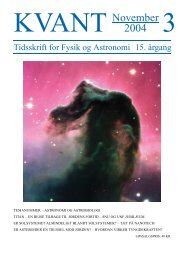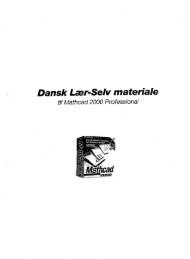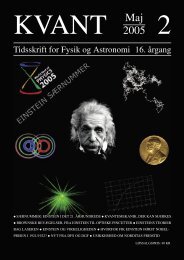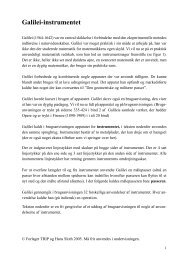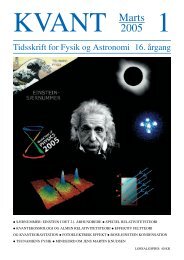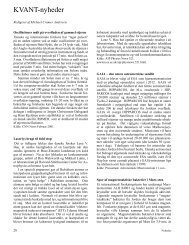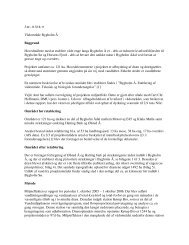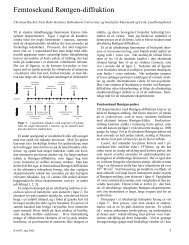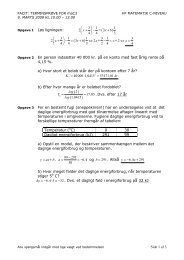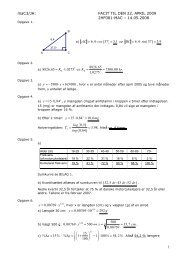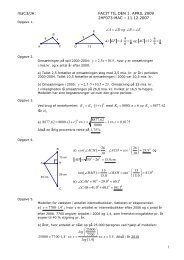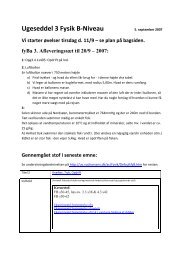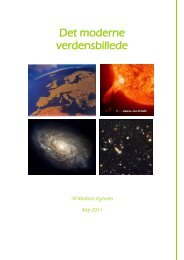Chapter 7 The Outer Planets
Chapter 7 The Outer Planets
Chapter 7 The Outer Planets
Create successful ePaper yourself
Turn your PDF publications into a flip-book with our unique Google optimized e-Paper software.
218 <strong>Chapter</strong> 7 <strong>The</strong> <strong>Outer</strong> <strong>Planets</strong><br />
4<br />
5<br />
Is Saturn the only planet with rings? No. Four planets<br />
(Jupiter, Saturn, Uranus, and Neptune) have rings.<br />
Are the rings of Saturn solid ribbons? Saturn’s rings<br />
are all composed of thin, closely spaced ringlets<br />
KEY WORDS<br />
A ring, 204<br />
B ring, 204<br />
belt, 195<br />
C ring, 204<br />
Cassini division, 204<br />
differential rotation, 193<br />
Encke division, 204<br />
F ring, 206<br />
KEY IDEAS<br />
Jupiter and Saturn<br />
• Jupiter is by far the largest and most massive planet in<br />
the solar system.<br />
• Jupiter and Saturn probably have rocky cores<br />
surrounded by a thick layer of liquid metallic hydrogen<br />
and an outer layer of ordinary liquid hydrogen. Both<br />
planets have an overall chemical composition very similar<br />
to that of the Sun.<br />
• <strong>The</strong> visible features of Jupiter exist in the outermost<br />
100 km of its atmosphere. Saturn has similar features, but<br />
they are much fainter. Three cloud layers exist in the upper<br />
atmospheres of both Jupiter and Saturn. Because Saturn’s<br />
cloud layers extend through a greater range of altitudes,<br />
the colors of the Saturnian atmosphere appear muted.<br />
• <strong>The</strong> colored ovals visible in the Jovian atmosphere<br />
represent gigantic storms, some of which (such as the Great<br />
Red Spot) are stable and persist for years or even centuries.<br />
• Jupiter and Saturn have strong magnetic fields created by<br />
electric currents in the metallic hydrogen layer.<br />
• Four large satellites orbit Jupiter. <strong>The</strong> two inner Galilean<br />
moons, Io and Europa, are roughly the same size as our<br />
Moon. <strong>The</strong> two outer moons, Ganymede and Callisto, are<br />
approximately the size of Mercury.<br />
• Io is covered with a colorful layer of sulfur compounds<br />
deposited by frequent explosive eruptions from volcanic<br />
vents. Europa is covered with a smooth layer of frozen<br />
water crisscrossed by an intricate pattern of long cracks.<br />
Galilean moon (satellite), 197<br />
Great Dark Spot, 213<br />
Great Red Spot, 193<br />
hydrocarbon, 207<br />
liquid metallic hydrogen, 195<br />
occultation, 211<br />
polymer, 208<br />
prograde orbit, 201<br />
consisting of particles of ice and ice-coated rocks. If<br />
they were solid ribbons, Saturn’s gravitational tidal<br />
force would tear them apart.<br />
resonance, 204<br />
retrograde orbit, 201<br />
ringlet, 206<br />
Roche limit, 215<br />
shepherd satellite (moon), 206<br />
spoke, 206<br />
zone, 195<br />
• <strong>The</strong> heavily cratered surface of Ganymede is composed<br />
of frozen water with large polygons of dark, ancient crust<br />
separated by regions of heavily grooved, lighter-colored,<br />
younger terrain. Callisto has a heavily cratered ancient<br />
crust of frozen water.<br />
• Saturn is circled by a system of thin, broad rings lying in<br />
the plane of the planet’s equator. Each major ring is<br />
composed of a great many narrow ringlets consisting of<br />
numerous fragments of ice and ice-coated rock. Jupiter has<br />
a much less substantial ring system.<br />
Uranus and Neptune<br />
• Uranus and Neptune are quite similar in appearance,<br />
mass, size, and chemical composition. Each has a rocky<br />
core probably surrounded by a dense, watery mantle; the<br />
axes of their magnetic fields are steeply inclined to their<br />
axes of rotation; and both planets are surrounded by<br />
systems of thin, dark rings.<br />
• Uranus is unique in that its axis of rotation lies nearly in<br />
the plane of its orbit, producing greatly exaggerated<br />
seasons on the planet.<br />
• Uranus has five moderate-sized satellites, the most<br />
bizarre of which is Miranda.<br />
• <strong>The</strong> largest satellite of Neptune, Triton, is an icy world<br />
with a tenuous nitrogen atmosphere. Triton moves in a<br />
retrograde orbit that suggests it was captured into orbit by<br />
Neptune’s gravity, and its orbit is spiraling down toward<br />
Neptune.




